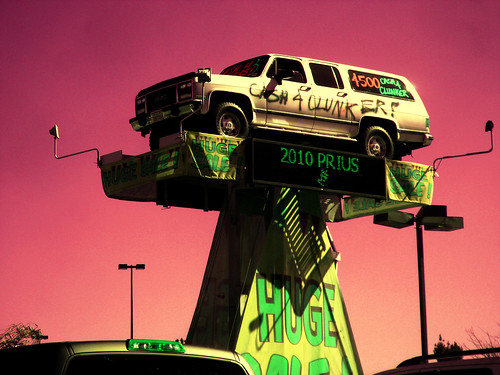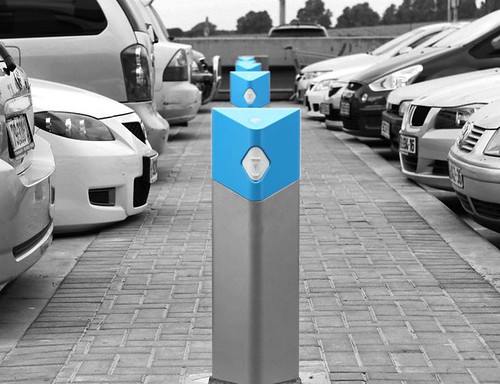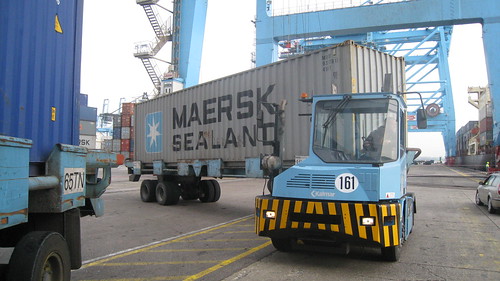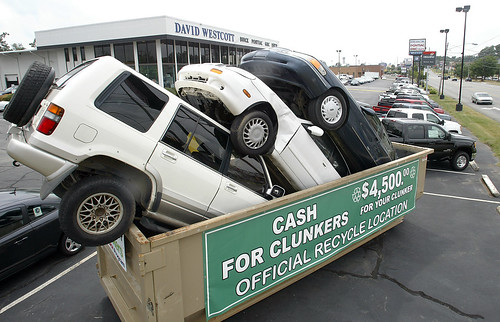Cash for Clunkers: New York Metro Auto Dealers Pull Out Citing Repayment Issues; Government Says Program Is Nearing The End
Hundreds of auto dealers in the New York area have withdrawn from the government’s Cash for Clunkers program, citing delays in getting reimbursed by the government, a dealership group said Wednesday. The Greater New York Automobile Dealers Association, which represents dealerships in the New York metro area, said about half its 425 members have left the program because they cannot afford to offer more rebates. They’re also worried about getting repaid.
“(The government) needs to move the system forward and they need to start paying these dealers,” said Mark Schienberg, the group’s president. “This is a cash-dependent business.”
Many dealers have said they are worried they won’t get repaid at all, while others have waited so long to get reimbursed they don’t have the cash to fund any more rebates, Schienberg said. Schienberg said the group’s dealers have been repaid for only about 2 percent of the clunkers deals they’ve made so far.
“The program is a great program in the sense that it’s creating a lot of floor traffic that a lot of dealers haven’t seen in a long time,” he said. “But it’s in the hands of this enormous bureaucracy and regulatory agency,” he added. “If they don’t get out of their own way, this program is going to be a huge failure.”
In contrast, today’s LA Times article notes that in California, which tops the list of states in terms of clunker transactions, most dealerships appear to be sticking with the program. The frenzy of buyer interest that greeted the program when it kicked off July 24 has dropped considerably partly because of shortages of popular cars such as the Toyota Corolla, Honda Civic and Ford Focus.
“The gold rush is over,” said Eric Choi, fleet manager at Hollywood Ford. “We’re still getting some business from it, but like every other dealer, we’re pretty much out of cars.”
Transportation Secretary Ray LaHood sought to reassure auto dealers Wednesday that they would be reimbursed for discounts given to customers under the program. With weeks-long delays in processing reimbursements, many dealers have feared the program’s $3 billion funding would run out before they received the money owed them.
An administration official said on Monday that the Transportation Department hoped to have 1,100 public and private sector workers processing the vouchers by the end of the week, up from a work force of about 350 through the end of last week.
Employees at a department service center in Oklahoma City have taken the lead in processing the vouchers, the official said, and workers have responded to calls for voluntary overtime to process the forms.
Meanwhile, Wall Street Journal reports that Obama administration will wind down its popular “cash for clunkers” incentive program on auto sales — and may do so as soon as early September, according to one person familiar with the matter.
When to end the program is a tricky question. The administration is closely watching the money remaining in the program, and expects there to be a surge in last-minute clunker deals once an end date is announced, said the person familiar with the matter. The administration wants to avoid having dealers agree to sales after all the funds have been used up, this person said.
Through Wednesday morning, dealers had submitted requests to be reimbursed for roughly 435,000 vouchers totaling more than $1.81 billion, though many of those hadn’t yet been approved.
The backlog at the National Highway Traffic Safety Administration also has dealers worried that authorities won’t know when the funding is gone, he said. “That has clearly been something that the industry has been constantly asking: When is it at $3 billion and one and there’s no money left? You need to have a soft landing kind of approach.”
Click here to read the entire article.












